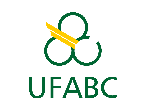Banca de QUALIFICAÇÃO: RODRIGO ALMERIA RAGIO
Uma banca de QUALIFICAÇÃO de MESTRADO foi cadastrada pelo programa.DISCENTE : RODRIGO ALMERIA RAGIO
DATA : 16/12/2020
HORA: 14:00
LOCAL: Remota
TÍTULO:
Effect of adding organic and inorganic coagulants in UASB effluent for post-treatment by Ultrafiltration (UF) membranes
PÁGINAS: 88
GRANDE ÁREA: Engenharias
ÁREA: Engenharia Ambiental
SUBÁREA: Saneamento Básico/Esgotos/Reator Anaeróbico
RESUMO:
The upflow anaerobic sludge blanket reactor (UASB) is an important milestone in wastewater treatment sustainability, but it usually requires post-treatment in order to meet discharge standards or allow reuse water production. An alternative are membrane separation processes, however a major issue with this technology is fouling formation at the membrane surface and pores, but it can be mitigated by use of coagulants. However, tannin-based coagulants were not tested yet in such process, organic coagulants that possess some advantages over traditional metallic coagulants. In this work, two coagulants were compared, a tannin-based one (TANFLOC SG) and a aluminum-based one (AQUA PAC 18, a commercial polyaluminum chloride), for UASB effluent treatment prior to ultrafiltration membranes, for evaluation of pollutant removal efficiency, influence over filterability during membrane filtration, and operational costs for a full scale project. An initial UASB effluent characterization and preliminary assays with a wide range of coagulants dosages in jar test (10, 20, 25, 30, 40, 50, 100, 250 and 500 mg/L) were made to define, considering coagulation/flocculation process efficiency, the dosages applied for filterability assays in a test cell, with PVDF membranes (pore size: 22 ± 6 nm). The preliminary assays results show some advantages of tannin-based coagulants, which affected less pH, consumed less alkalinity and produced a less sludge compared to the aluminum-based coagulant. Regarding pollutant removal, tannin dosages between 20 and 50 mg/L showed better results for turbidity and evaluated organic fractions removal, while the 10 mg/L dosage presented inferior results and higher dosages reached the point of turbidity and organic matter addition in the effluent. For AQUA PAC 18, higher efficiency was obtained for a wider range, from 20 to 100 mg/L, with better results for some parameters, compared to TANFLOC SG (phosphorus removal principally), but higher dosages resulted in accentuated pH and alkalinity reduction, leaving optimal coagulation/flocculation range with consequent efficiency loss, beyond a possible charge inversion according to zeta potential results. Results so far collaborated to point that smaller coagulant dosages (until 50 mg/L) might be more advantageous before membrane filtration systems, considering costs and pollutant removal efficiency. So, 10, 25 and 40 mg/L dosages were chosen for the next steps.
Keywords: wastewater treatment, coagulation/flocculation, fouling, operational cost
MEMBROS DA BANCA:
Presidente - Interno ao Programa - 1073159 - EDUARDO LUCAS SUBTIL
Membro Titular - Examinador(a) Interno ao Programa - 2342998 - RODRIGO DE FREITAS BUENO
Membro Titular - Examinador(a) Externo à Instituição - MIRIAM CRISTINA SANTOS AMARAL
Membro Suplente - Examinador(a) Interno ao Programa - 1814655 - LUCIA HELENA GOMES COELHO
Membro Suplente - Examinador(a) Externo à Instituição - ADRIANO LUIZ TONETTI




